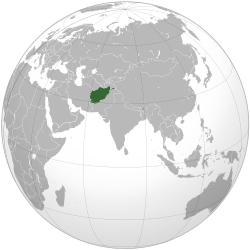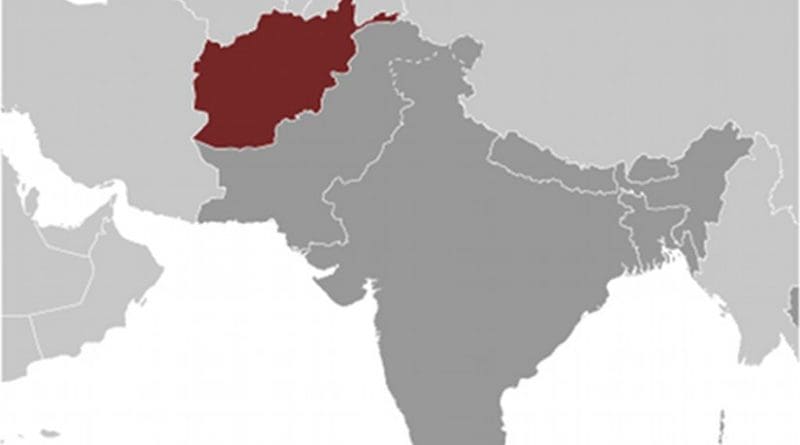US’ Actions And Intentions In Afghanistan: Reading Of Pointers
By Brigadier (Retd.) Dr. Ahsan ur Rahman Khan
Deciphering any country’s actions and intentions specially in a conflict situation is one of the prime concerns of the related departments and institutions of the effected countries; as also, it certainly interests most part of the general public.
Deciphering the actions may not pose much problem if validity of the ‘claimed actions’ is tested on the criteria of the undeniable ground realities. However, discernment of intentions entails a comparatively ‘hazy’ process. Yet, it is a critical requirement for the projected planning at national and international levels. There are many ways to undertake such tasks; one of those is a very thoughtful ‘reading between the lines’ to discern the ‘pointers’. Care, however, has to be taken to do that on the basis of the really credible pieces of information.

One of the major concerns of the policy planners and most public alike, specially in Asia (West, Central, South, and North) besides the other world powers, relates to deciphering the actions and policy pronouncements of US in Afghanistan to discern its intentions in the projected time-frame (i.e. complete withdrawal as originally announced, or partial withdrawal – if so, leaving behind what all military and political tentacles, and to what possible after-effects?). In that context, this paper presents reading of certain pointers from the latest (27 September 2012) document of US’ Department of Defense in the form of a briefing by US’ Secretary of Defence Mr. Panetta and US’ Chairman Joint Chiefs of Staff General Dempsey (http://www.defense.gov/transcripts/transcript.aspx?transcriptid=5125).
The document is the transcript of the briefing. It contains the statements of both Secretary Panetta and General Dempsey and is fairly lengthy. Some extracts of the statement of Secretary Panetta, however, are worth noting (underlinings added to indicate the points to be focused upon for evaluation): (1) “In short, in mid-2009, I think there was a real risk that the mission in Afghanistan might very well fail”; (2) “Last week, as you know, we completed the drawdown of 33,000 surge forces that the president ordered to Afghanistan in December of 2009. As I said in announcing this milestone last week, it is clear that the surge allowed us to turn a very important corner in 2011. It accomplished the primary objectives of reversing the Taliban’s momentum on the battlefield and dramatically increased the size and capability of the Afghan national security forces”; (3) “The Taliban’s gains on the battlefield have been reversed. Violence levels in populated areas have decreased significantly. Al Qaida has been denied safe haven, and obviously its leadership has been decimated. The Afghan national security forces have become more capable and expanded dramatically,”; (4) “The enemy we are dealing with, as we have said before, is adaptive and resilient”; (5) “There has also been a very troubling rise, as we all know, in insider attacks. I expect that there will be more of these high-profile attacks ”; and (6) “As the president has made clear, we have an enduring commitment to an Afghanistan that can secure and govern itself and that is never again a safe haven from which terrorists can attack us”.
When these extracts are carefully examined, a number of related aspects are unmistakably discerned. Firstly, Secretary Panetta’s assertions (extracts 1 – 3) that US’ strategy of launching the surge of additional 33,000 troops in Afghanistan not only saved a ‘failing situation’ of US in 2009 but also turned the table on the Taliban and helped in dramatically increasing the size and capability of Afghan national security forces by 2011, clearly fails the test of matching with ground realities which are quite contrary. In reality as retaliation to the extremely inhuman massacre of the Afghan men, women, and children by US/NATO/ISAF forces in their ‘surged’ operations large number of even the non-Taliban and non-Pashtun Afghans have also joined the fight against these occupation forces. This fact is evident from the public admissions of even the US-installed Karzai government in Kabul, as also by the entire independent media.
The recent escalation in the ‘insider’ or ‘green on blue’ attacks – so nightmarish for US/NATO/ISAF is also due to this ground reality. The fact of the failure of the ‘surge’ has also been emphatically highlighted by many, like Michael Kelley – a reporter of Business Insider Military & Defense who has quoted Lt. Col. Daniel Davis (US) and the published information charts of ISAF. He quotes Lt. Col. Daniel Davis who brought to fore the fact that instead of the surge succeeding, “U.S. casualties increased with each successive increase of troops since violence began to rise in 2005—reaching a peak in the middle of the surge (October 2011)—and only began to drop once 10,000 troops were withdrawn by the end of December 2011”; and then he himself asserts, “Essentially the U.S. has been deploying troops into a meat grinder”. These assertions are clearly testified by the published ISAF information charts republished by Michael Kelley (http://www.businessinsider.com/nato-charts-show-how-afghan-surge-failed-2012-9). These ISAF charts show that even as recently as during the month of August 2012 the number of Afghans’ direct/indirect/surface to air attacks on US/allied forces per month was as high as around 3,000 in that one month; and their mines/explosive attacks during the month of July 2012 were above 700 in that month. And, when the sharply increasing number of the fatal ‘insider’ attacks by the personnel of the Afghan national forces on their own trainers from US/NATO/ISAF forces is also taken into account, the falsity of US’ claims of success becomes a glaring reality.
Secondly, Secretary Panetta’s admission (extracts 4 and 5), of the (Afghan) enemy being adaptive and resilient, and of the very troubling rise in insider attacks, clearly indicates the extreme difficulty US is now realising it will have to face in even getting a ‘safe’ extrication passage of its forces from Afghanistan without some ‘arrangement’ with the Taliban and other anti- America Afghan factions – the ranks of whom may as well gradually be bolstered up by the ‘inside attackers’.
Third, the reiteration (extract 6) by Secretary Panetta on behalf of US’ President, of the “enduring US’ commitment for ensuring the security and self-governance of Afghanistan”, clearly leads to the discernment of the ‘driving’ governmental urge of US to somehow drag further its politico-military presence and grip on that country.
These readings from the US’ document highlight certain very important points to ponder upon: (1) The results produced by US’ military intervention in Afghanistan clearly prove that from the outset the US’ Afghanistan Strategy was based upon flawed assumption; that the ‘announced’ assumptions and objectives of that strategy were not real; and that under the ‘propagated’ pretext of attaining the objectives of war on terror, US factually launched this intervention only to quench its thirst for external domineering linked to its geo-economic and geopolitical hegemonic designs. (2) The bitter lessons learnt by the Greeks, Moghals, British, and Soviets who militarily ventured into Afghanistan, of Afghans’ proven strategic resilience, will to fight, and capacity to repeatedly bounce back against any foreign aggressor, were disregarded by the US’ planners – most probably under the influence of their ‘super power-military might arrogance’. (3) Despite the ‘mess’ in which US government finds itself now, it still appears to do whatever possible to continue with its efforts to retain its military and political hold on Afghanistan – the ‘geostrategic fulcrum’ of the region.
These pointers unmistakably lead to the discernment of the realities that the US’ plan right from the outset was to implant its politico-military control mechanism on Afghanistan to enable itself to gravitate its hegemonic influence over China, Central Asia, Russia, Iran, and Pakistan, irrespective of the catastrophic human and social cost to Afghanistan and Pakistan; that, to achieve that objective US may now even offer some compromises with the Taliban and other power-wielding Afghan factions; and that, if the Taliban do not accept the US-desired compromise (which cannot be ruled out keeping in view the psyche of Afghans relating to foreign occupiers) US is more likely to continue with its ‘military response’ resulting in further destability in the region– because retention of ‘controlled destability’ in the region is also evidently part of the basic US’ strategic calculations in this case. There are therefore chances that the projected picture of at least the next few years may be quite problematic and even catastrophic for the people of Afghanistan and Pakistan. However, a carefully ‘collated evaluation’ of the indicators from history and from the phenomenal and fast emerging new national and international trends in the region and the related countries also clearly point to the equal, if not higher, chances that US may ultimately meet what could be its final ‘waterloo’.
Author is a Retired Brigadier, a postgraduate from Army War College with command, General Staff, and rich battle-field experiences. He is a post-retirement PhD from University of Peshawar, a published research-analyst, and lectures in social sciences in the universities of Islamabad (e-mail [email protected])

